Huaiyang cuisine from China’s Jiangsu province reveals the delicate art of Chinese cooking through its precision, subtle flavours, and unrivalled craftsmanship.
By Jocelyn Tan
Images: The Huaiyang Garden; Jiangnan Wok · Rong
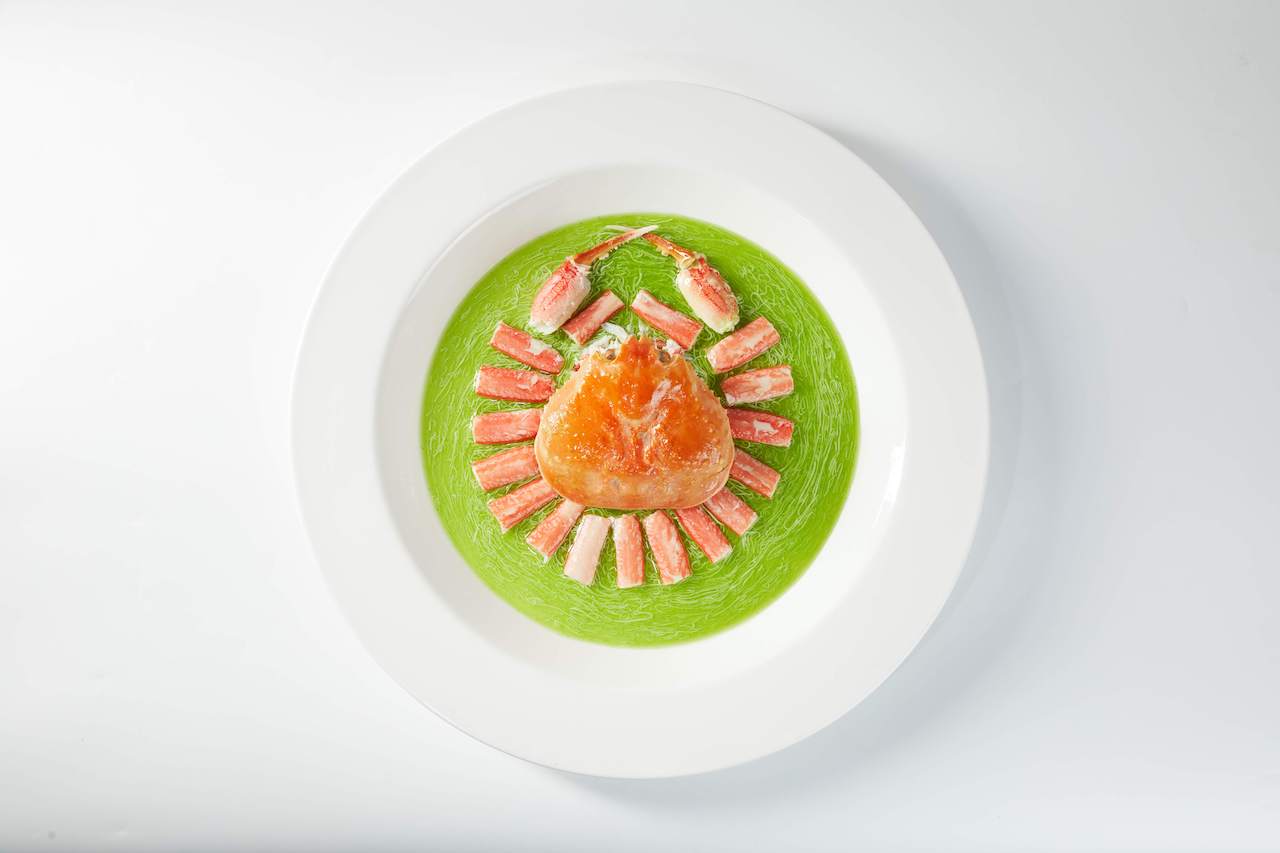
Among China’s Four Great Traditions of cuisine — Chuan (Sichuan), Lu (Shandong), Yue (Cantonese), and Huaiyang — it’s the latter that embodies an understated elegance. Representing the flavours of East China, Huaiyang cuisine is renowned for its meticulous knife skills, refined techniques like braising and steaming, and an emphasis on the natural flavours of high-quality, seasonal ingredients. However, compared to Sichuan’s fiery heat or Cantonese’s global ubiquity, Huaiyang cuisine remains lesser known.
The roots of Huaiyang cuisine lie in Jiangsu province, originating in the areas around the lower Huai and Yangtze rivers. Dating back to the Han Dynasty (206 BCE–220 CE), which reunified China after the civil war, the cuisine holds significant historical and cultural importance. Huaiyang cuisine is renowned for its subtlety and elegance, which resonated with the scholars and literati of ancient China. Situated strategically along the Grand Canal, the region facilitated the exchange of culinary influences and ingredients from across the nation. With its fertile lands, interconnected waterways, and coastal proximity, the area offers an unparalleled bounty of ingredients: freshwater fish, crabs, shrimp, bamboo shoots, and lotus root. This natural abundance forms the backbone of Huaiyang cuisine, where freshness and quality take precedence.
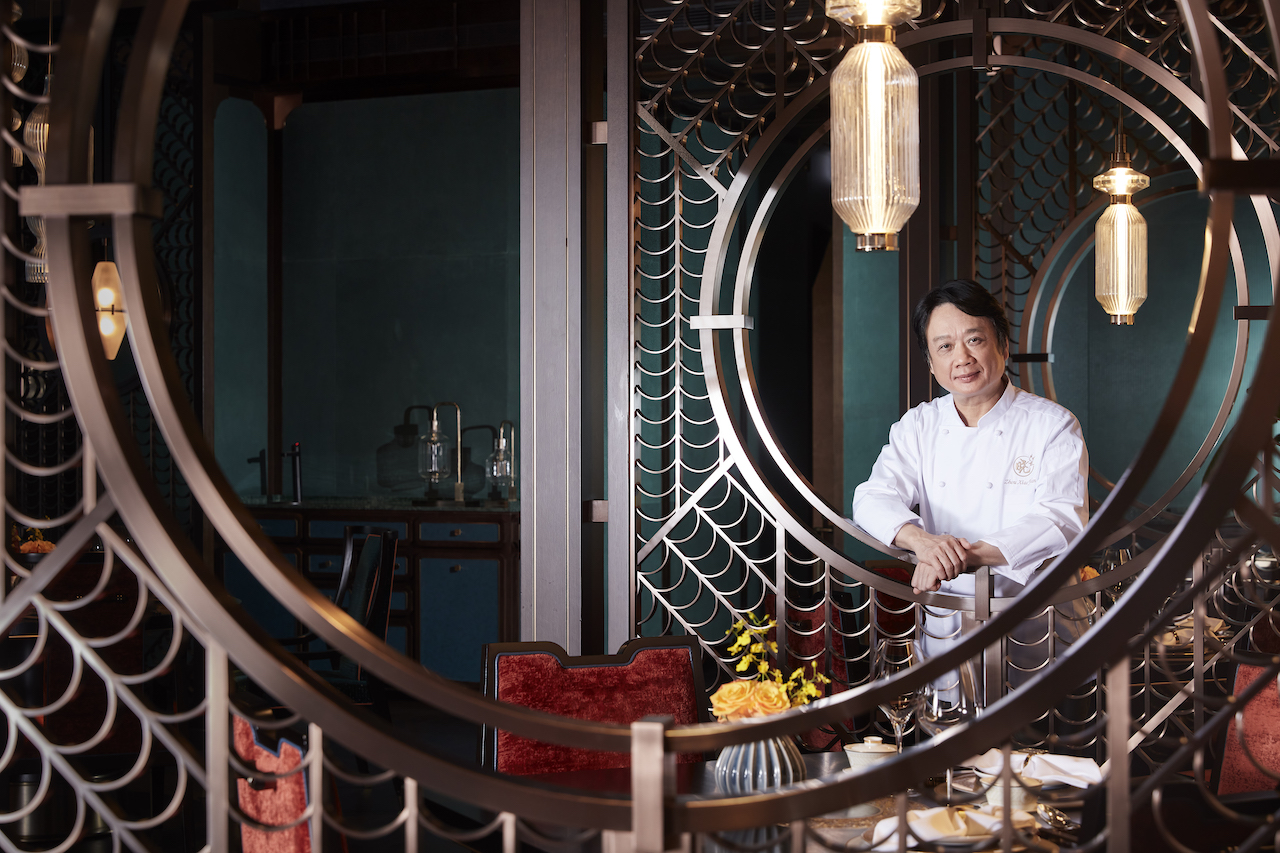
Chef Zhou Xiaoyan (pictured above), often referred to as the Godfather of Huaiyang Cuisine, points out, “The region’s geography and climate provide a variety of fresh produce that inspires every dish.” Born in the Huai’an province, he has dedicated his career to his culinary roots, serving not only as an inheritor but as an ambassador for the intangible cultural heritage of Huaiyang cuisine. He is currently the consultant for the world’s only two Michelin-starred restaurant that serves Huaiyang cuisine, The Huaiyang Garden in Macau.
Chef Joe Hou (below left), Area Executive Chinese Chef of the Shangri-La Group, and consultant of Jiangnan Wok · Rong, a one Michelin-starred restaurant that focuses on Huaiyang cuisine, elaborates further: “The essence of Huaiyang cuisine is rooted in its dedication to highlighting the natural flavours of ingredients, using delicate and subtle seasoning, and employing meticulous preparation techniques. Huaiyang cuisine also has historical ties to imperial courts, influencing its emphasis on precision and presentation.
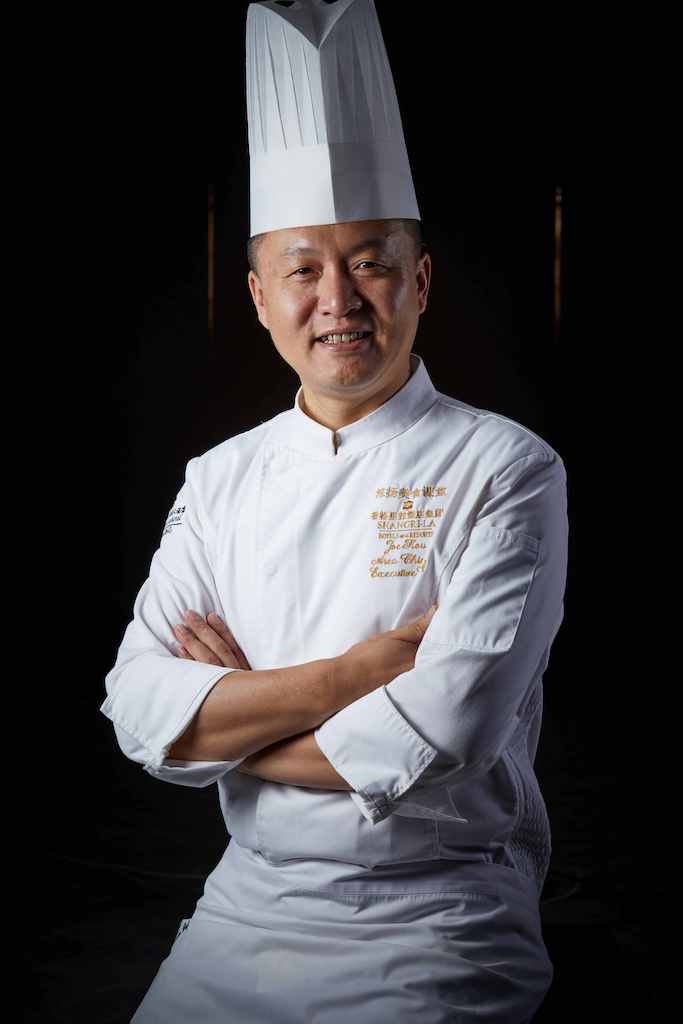
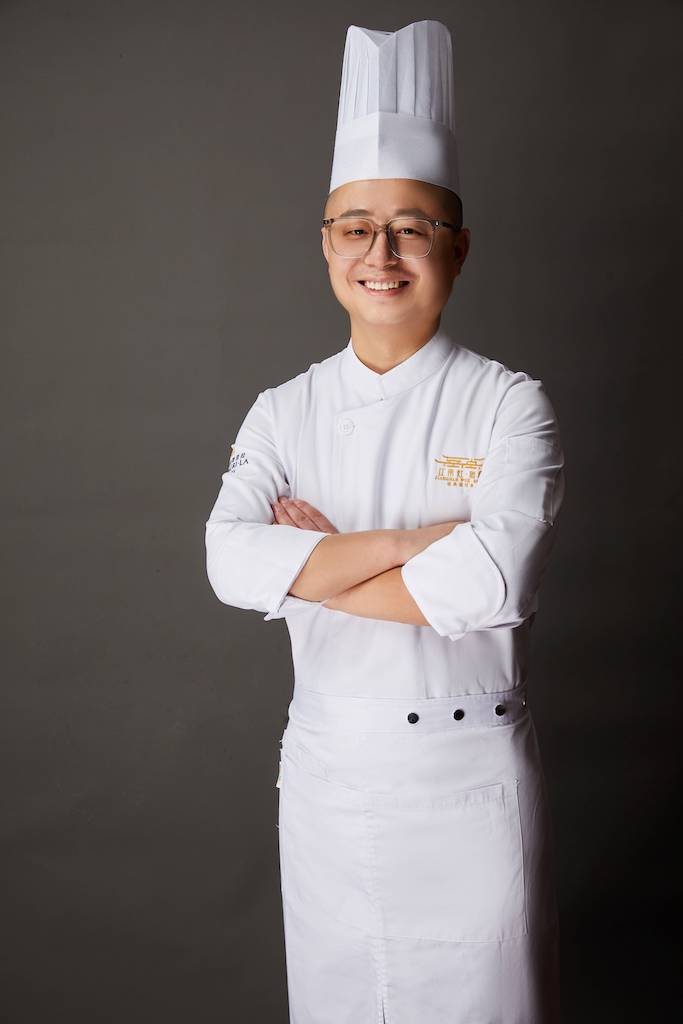
This cuisine is distinguished from other Chinese cuisines by its emphasis on lightness and freshness, which are less commonly found in other regional cuisines. Huaiyang dishes often feature a harmonious balance of flavours, avoiding overly strong or heavy seasonings, and instead focuses on maintaining the integrity and purity of each ingredient.
While Teochew cuisine is also celebrated for its clean, light flavours, it’s generally rooted in home-cooked simplicity rather than the intricacy associated with Huaiyang cuisine. Cantonese cuisine, on the other hand, incorporates a broader range of seafood due to its coastal origins and often includes dried ingredients like abalone or dried scallops to intensify umami notes in the dish.
Masterful Techniques
What truly sets Huaiyang cuisine apart is its technical mastery. Every dish is a testament to the precision and skill required to bring out its subtle elegance. Knife skills, braising, and steaming—the three pillars of Huaiyang cooking—demand not only expertise but also an artistic sensibility.
“Huaiyang cuisine is renowned for its intricate knife work, seen in dishes like Wensi Tofu (文思豆腐) and Suoyi Cucumber (蓑衣黄瓜), where the artistry of cutting enhances both aesthetics and flavour,” says Andy Ma, Executive Chinese Chef of Shangri-La Fuzhou (above right). Dishes like Sweet and Sour Mandarin Fish (松鼠鳜鱼), for instance, is one dish where precise cuts allow the fish to cook evenly and absorb delicate flavours. The fineness of the cuts also determines the dish’s texture, a hallmark of Huaiyang’s attention to detail.
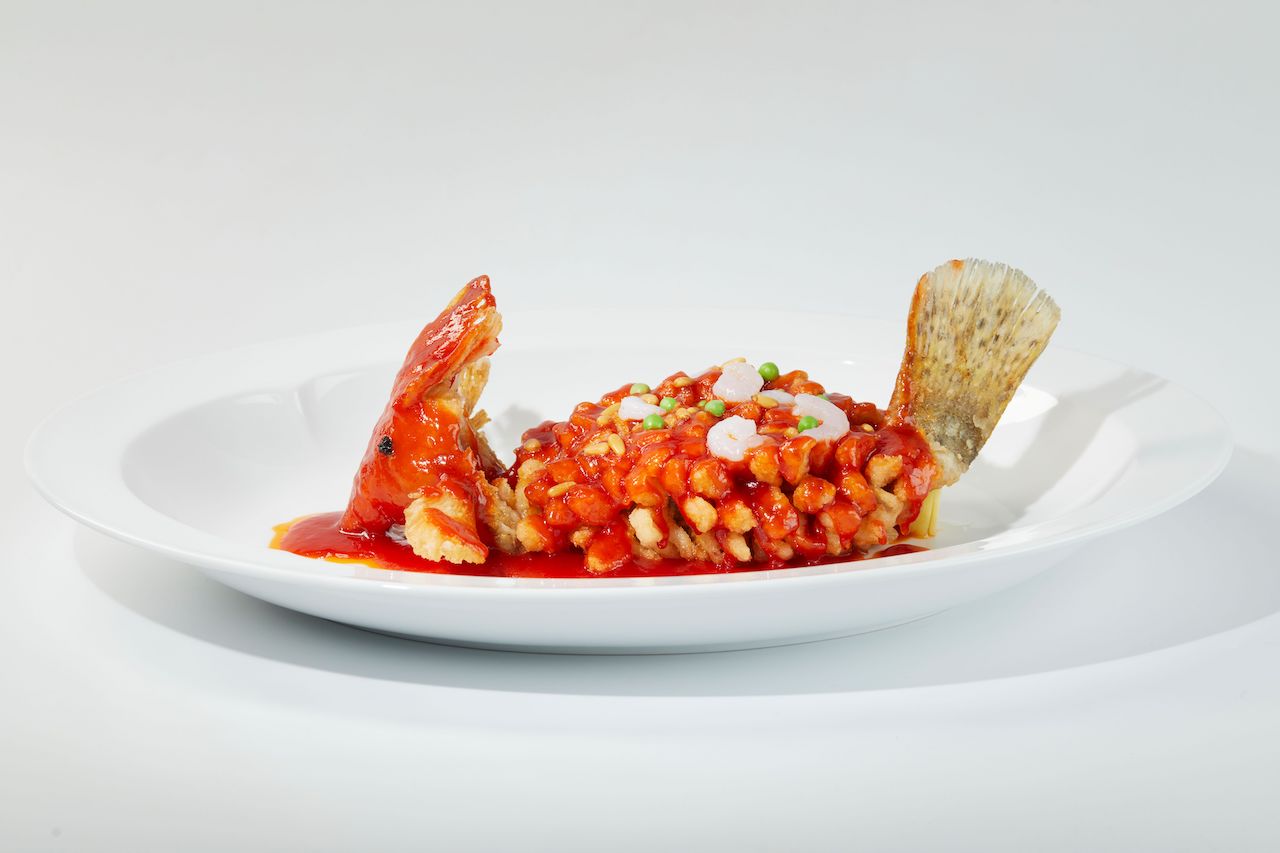
Another example, Wensi Tofu, is a soup dish that requires the tofu to be cut into thin strands as fine as hair, demanding exceptional hand stability and precise knife control. Each cut to the soft tofu must be evenly spaced and uniform in thickness, otherwise it can easily break or become uneven. Suoyi cucumber is an appetiser that’s crunchy, sour and spicy all at once. Unlike the regular cucumber salad, served whole in the shape of a spiral, with precise and delicate cuts.
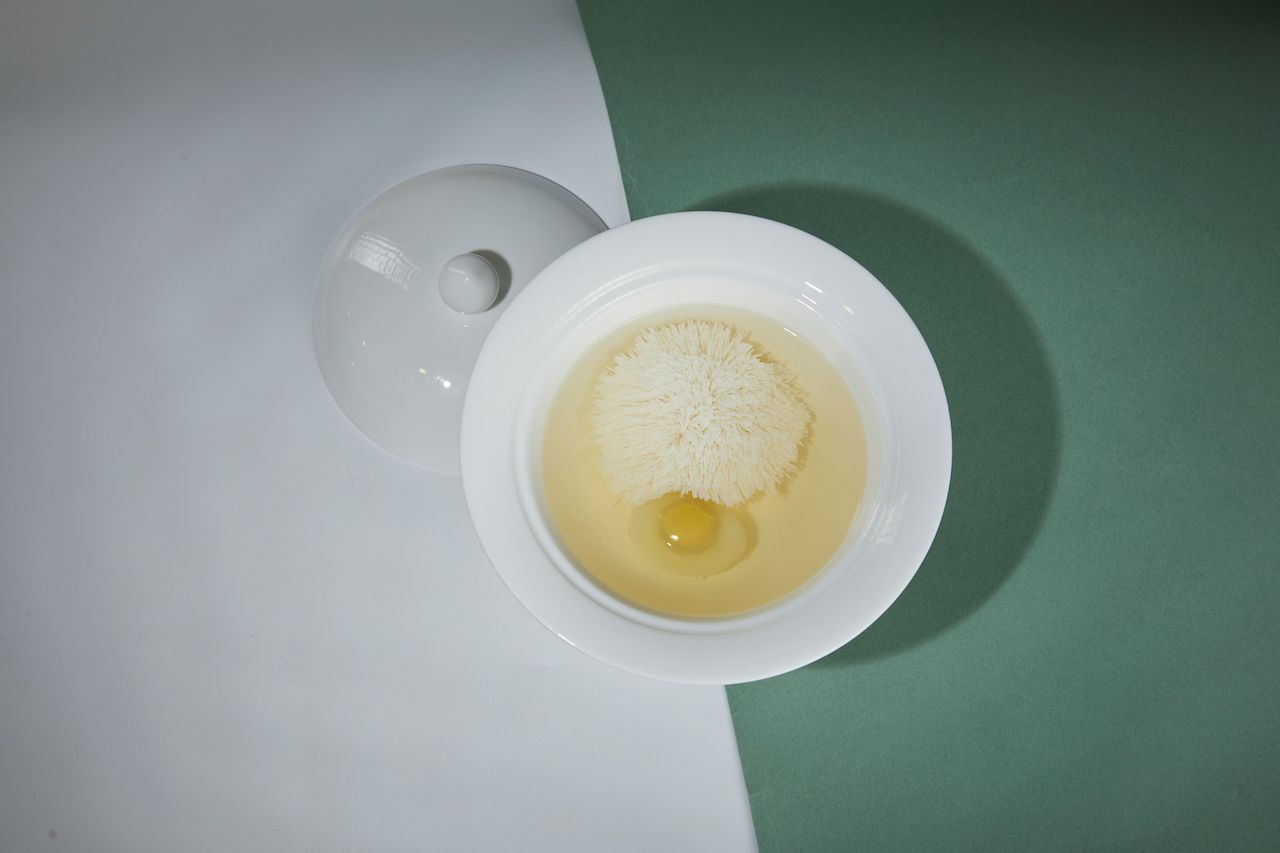
According to Chef Ma, the way one handles the ingredients using the knife also affects texture and mouthfeel. “For example, thinly sliced bamboo shoots retain a crisp texture when quickly fried, while chunky cuts become soft and juicy with prolonged braising. Meat preparation — whether shredded, sliced, diced, or minced — alters its final texture: shredded meat is tender, sliced meat may be tougher, diced meat offers chewiness, and minced meat is delicate and soft. This variation is crucial in dishes like Lion’s Head meatballs, where the fineness of the meat paste impacts the melt-in-your-mouth experience,” he explains.
But knife mastery transcends ingredient handling too: it’s also used for aesthetics. Chef Ma adds that Huaiyang cuisine emphasises the aesthetic shape of dishes. This includes carving radishes, pumpkins, and other ingredients into lifelike flowers and animals for decorative purposes. Chef Hou echoes similar sentiments: “There needs to be an attention to detail in presentation, to ensure that each dish is not only delicious but also visually appealing.”

Braising is another defining technique, where ingredients are slow-cooked to meld flavours while preserving their natural character. The Stewed Crab Meat and Lion’s Head (蟹粉狮子头) (above), require long simmering over low heat, so chefs must accurately gauge this low heat to ensure ingredients are fully cooked and flavours well-integrated without causing the Lion’s Head (狮子头), the meatballs, to fall apart.
Steaming, often considered a simple technique, is elevated to an art form in Huaiyang cuisine. It is a method that emphasises purity, preserving the natural flavours and textures of ingredients. Chef Zhou’s 20-year Huadiao Braised Shadfish is a prime example. The fish is deboned meticulously to retain its original shape before being steamed with 20-year-old Huadiao wine, resulting in a dish that balances richness with lightness.
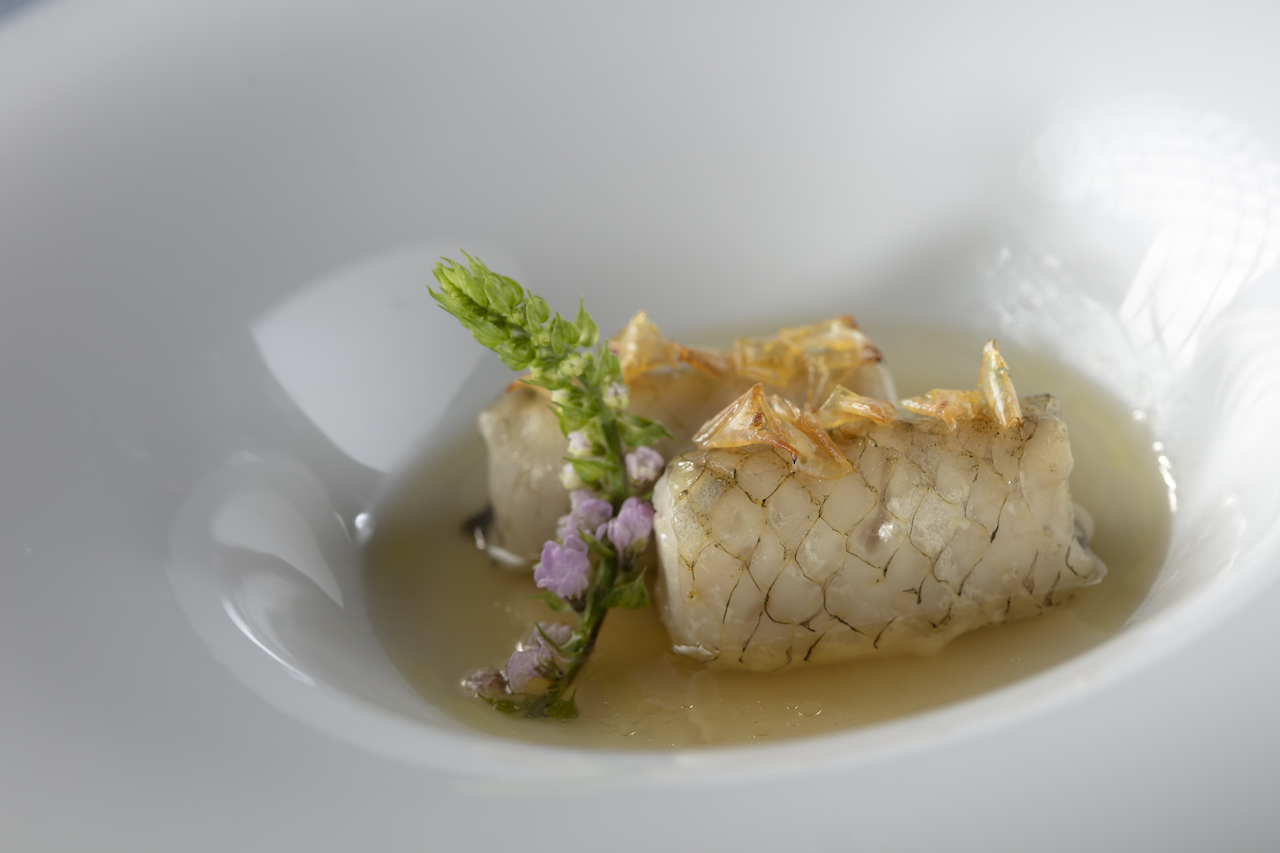
Modernity Meets Tradition
While Huaiyang cuisine remains deeply rooted in tradition, chefs like Ma, Hou, and Zhou are finding ways to innovate without losing the essence of its heritage. Chef Hou speaks about making simple changes like using Spanish Iberico ham in the traditional Yangzhou fried rice, which adds a rice and savoury touch to complement the shrimp and Chinese sausage to create a unique yet familiar experience for international guests while still retaining the essence of Huaiyang cuisine.
As Jiangnan Wok · Rong is located in Fuzhou, the capital of southeastern China’s Fujian province, Chef Ma makes use of the local environment to inspire the Huaiyang cuisine at the restaurant. One example he gives is the Yellow Croaker Meatball Soup (below). It combines local fresh yellow croaker with the renowned Huaiyang dish Lion’s Head, incorporating fat meat grains into the fish to enrich the texture and add a unique yellow croaker flavour.
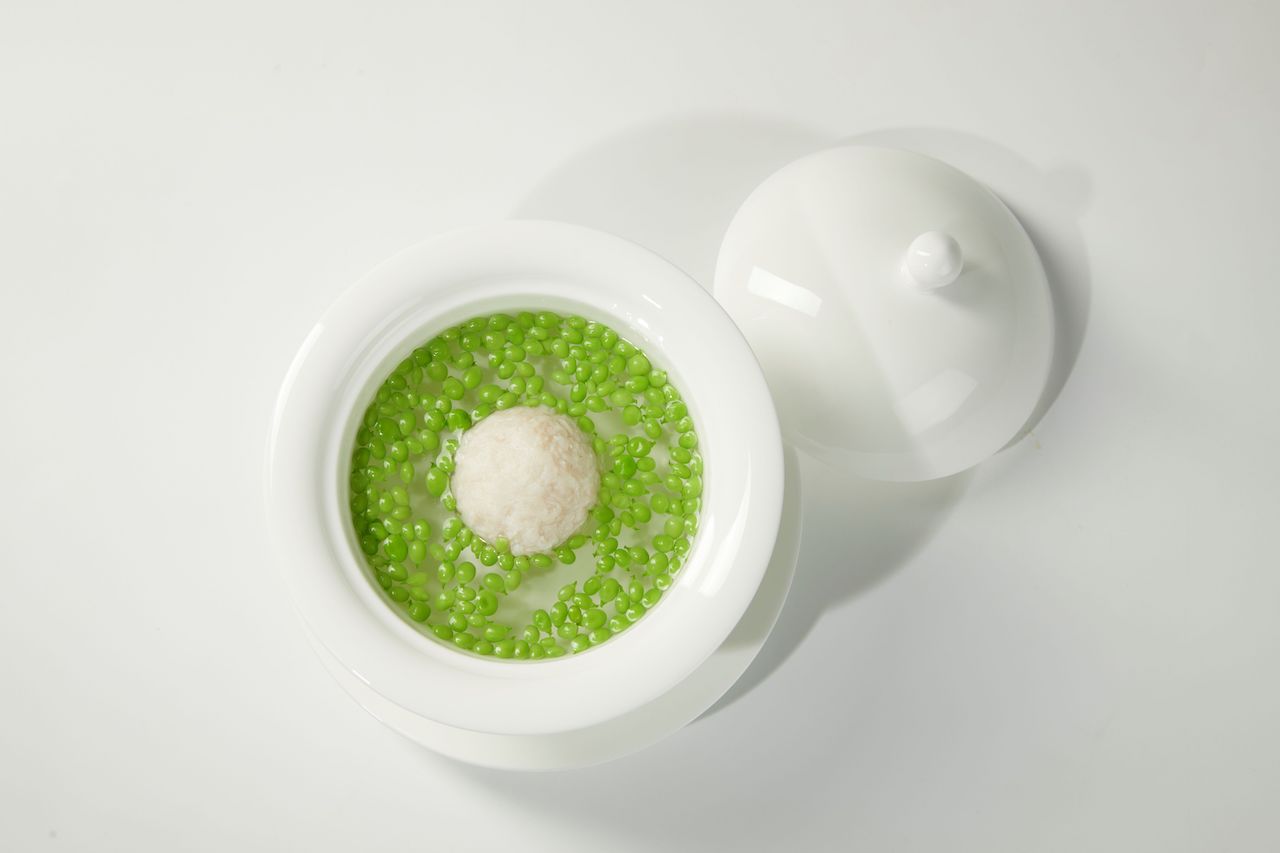
Another dish he highlights is the Zhenjiang Braised Pork paired with Seaweed Jelly. “It merges the famous Huaiyang dishes with Fuzhou’s special snack, utilising Huaiyang marinating techniques for the braised pork and pairing it with seaweed jelly. This combination creates a novel taste experience that satisfies diners’ expectations for the integration of tradition and innovation,” he adds.
Despite its rich heritage, Huaiyang cuisine faces challenges in gaining the global recognition enjoyed by Sichuan and Cantonese cuisines. One significant hurdle is its reliance on regional ingredients. “Huaiyang cuisine is highly dependent on raw ingredients,” Chef Xiao of The Huaiyang Garden (below left) and the protégé of Chef Zhou, explains. While advancements in logistics have made it easier to source these ingredients, the nuances of Huaiyang cuisine remain tied to its place of origin.
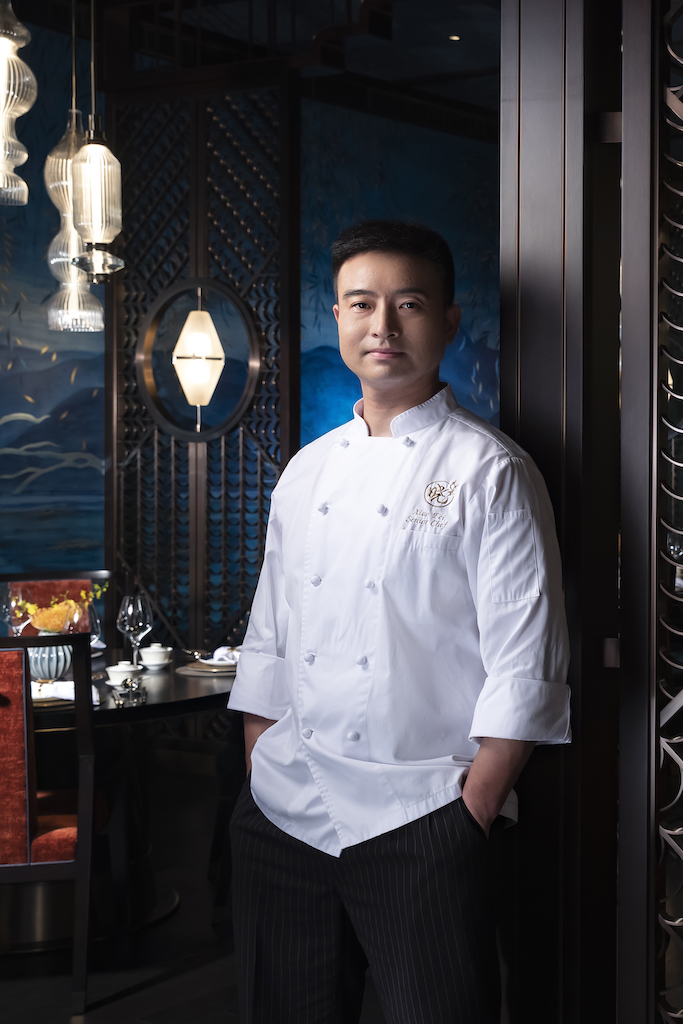
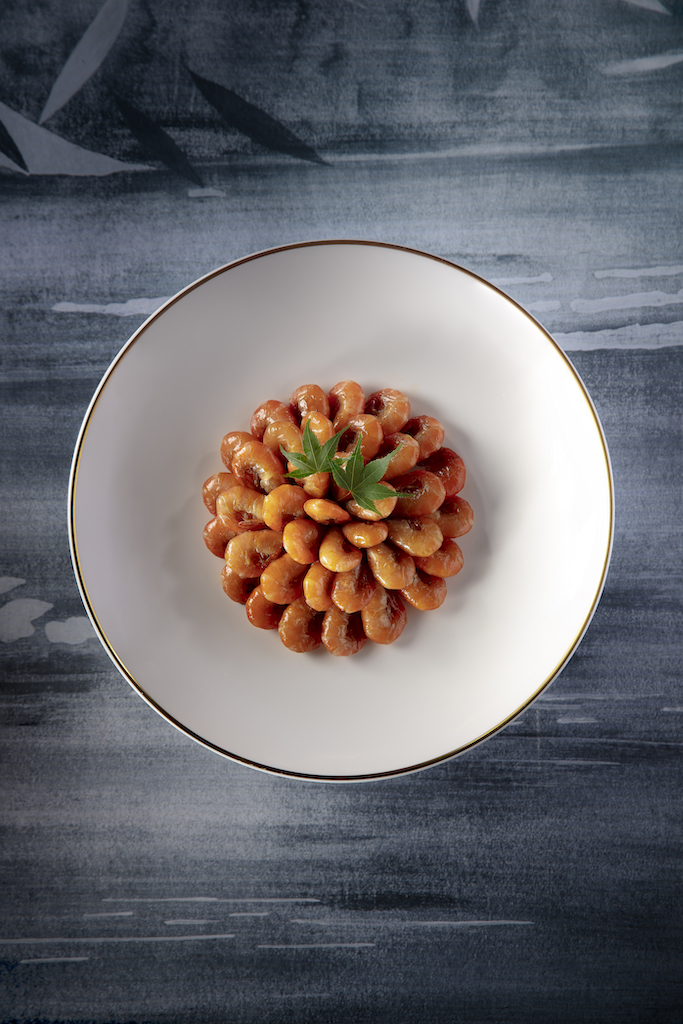
The labour-intensive nature of Huaiyang dishes also poses a challenge. From intricate knife expertise to time-consuming cooking methods, every step demands exceptional skill and dedication. Chef Zhou admits, “Knife techniques and fire-watching are both experience-based skills. You have to practise your knife skills for at least three years, use your eyes and have experience in fire-watching: these are key skills essential for any Huaiyang cuisine chef.”
Educating diners and chefs alike is essential for preserving and promoting Huaiyang cuisine. Chef Hou emphasises the importance of mentorship, ensuring that younger chefs are equipped to carry forward its traditions. Chef Ma sees his role as both an inheritor, innovator and disseminator as a glorious yet challenging endeavour. “For Huaiyang cuisine to thrive in modern society, it must adapt to new dietary trends and consumer needs,” he admits. “By integrating elements from other cuisines or international flavours, I create novel and unique dishes that attract young consumers and diners from diverse cultural backgrounds, injecting new vitality into Huaiyang cuisine.”
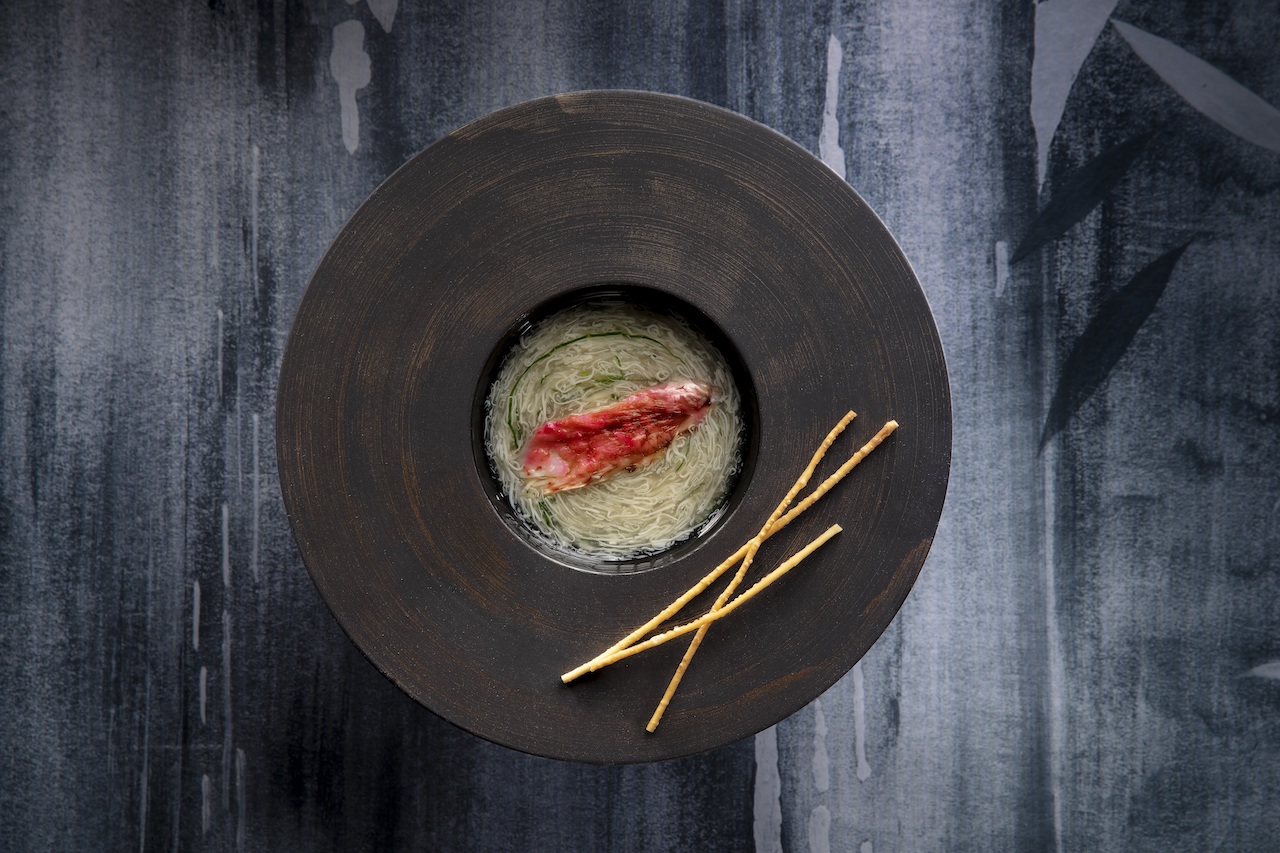
As chefs push the boundaries of innovation while honouring its roots, Huaiyang cuisine stands poised to captivate a broader audience, offering a dining experience that is both timeless and profound. By elevating natural flavours through unparalleled craftsmanship, Huaiyang cuisine remains one of China’s most treasured culinary traditions, ready to enchant the world—one exquisite dish at a time.
